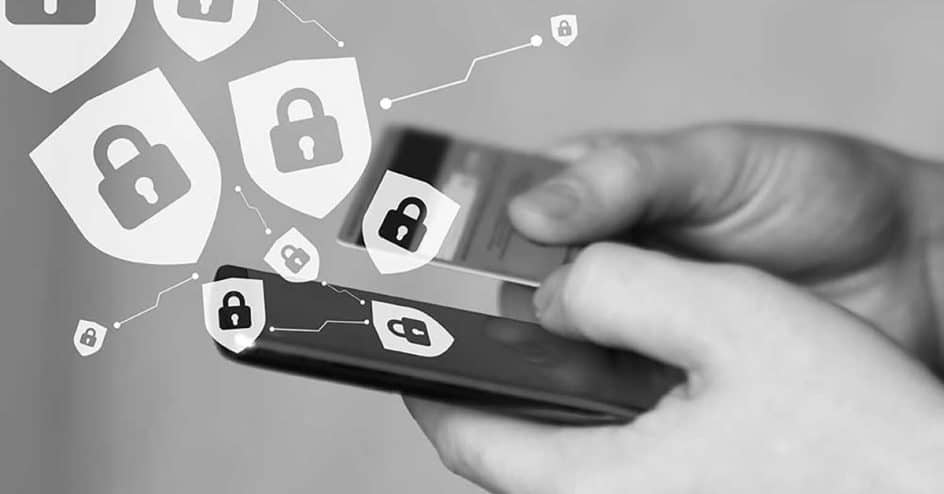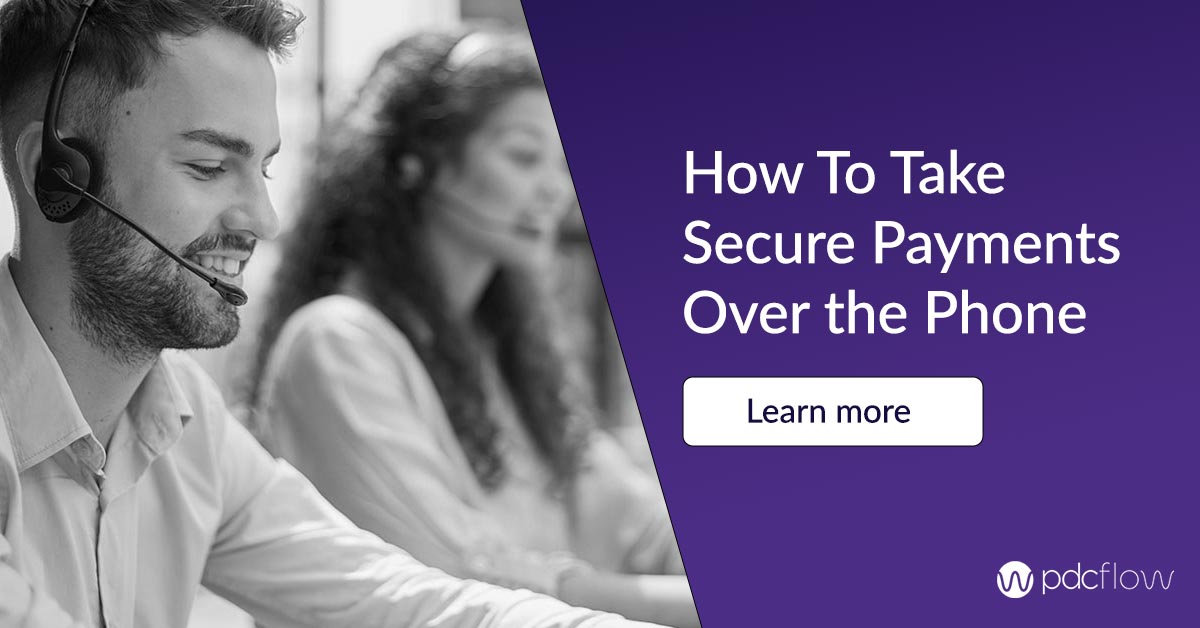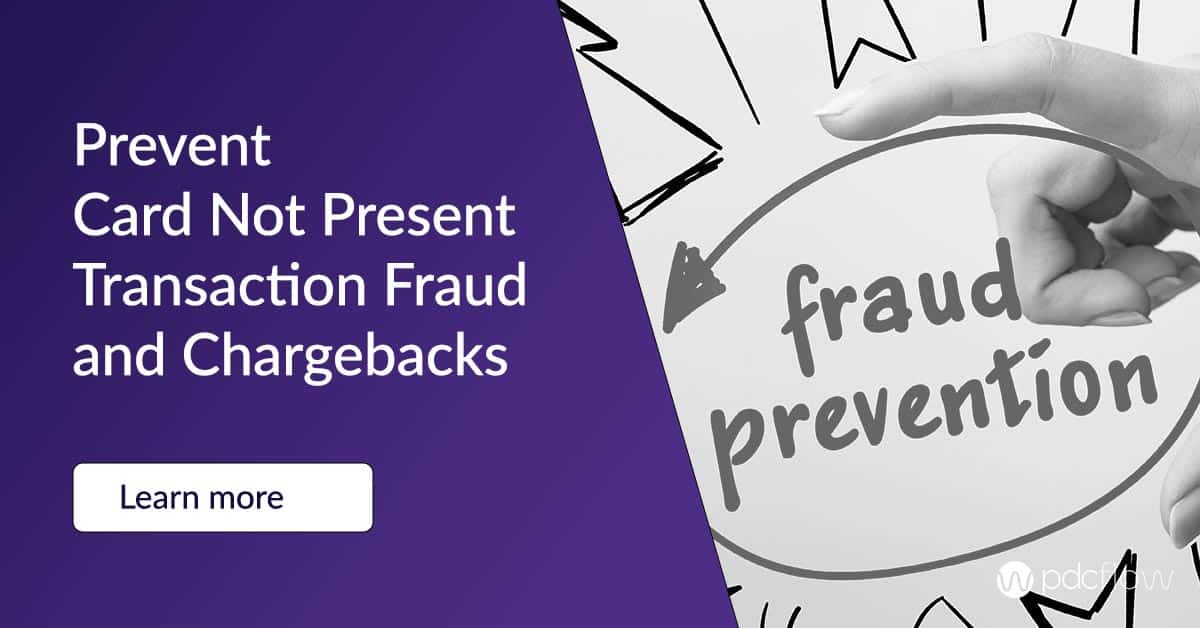According to Forbes, there were 2,365 cyberattacks in 2023, with 343,338,964 victims. These data security breaches are a big problem for companies and consumers alike.
That’s why there are rules, regulations, and best practices centered around protecting customers through credit card tokenization and data encryption.
Credit card tokenization and encryption shield essential customer payment information from being exposed.
Your payment software should be responsible for these measures while processing transactions for your company and during credit card data storage.
Let’s take a look at how these payment security features work and why they are so necessary.
What is Credit Card Tokenization?
Card tokenization is the act of creating a random string of numbers that represents the real credit card information—like the primary account number (PAN)—required for a payment.
If the data is seen by someone it shouldn’t be, only the credit card token is exposed and real card numbers remain protected. Credit card tokenization is a basic way payment processors can add an extra layer of digital protection to your payments.
Companies should pick a payment software vendor that uses credit card tokenization along with other security features for safer customer payments.
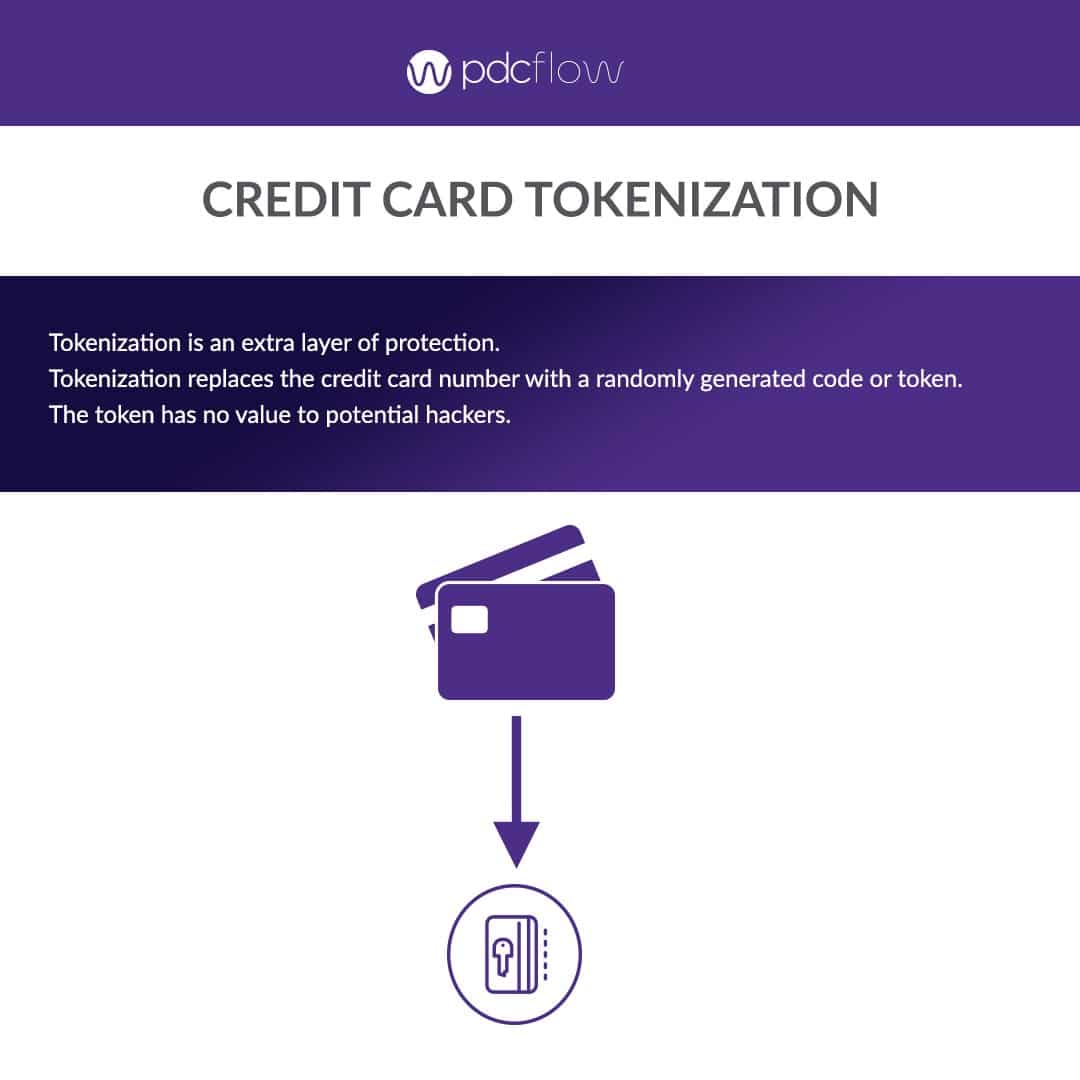
Credit Card Tokenization Technology
Companies that accept credit card payments are subject to Payment Card Industry Data Security Standards (PCI DSS).
It’s your organization’s responsibility to your customers to know and follow PCI DSS compliance. You need to keep card numbers and other payment information secret during handling and storage to prevent credit card fraud.
This means choosing a trusted payment processing software like PDCflow, that prioritizes data security through technology.
For example, PDCflow is PCI compliant and HIPAA compliant, and follows credit card tokenization and data encryption best practices to give you and your customers peace of mind.
Reduced PCI Compliance Burden With PDCflow
Businesses that don’t store credit card information in their systems are subject to fewer PCI compliance requirements.
That’s why PDCflow’s patented Secure Entry Overlay technology was designed. Secure overlays work as a transparent layer between our payment form and your company’s system of record.
Then we process credit card payments and capture and store payment details so your organization can relax know you don’t need to keep payment information internally.
Secure Overlay, credit card tokenization, and encryption maximize your ability to protect your company and your customers from a data breach.
Credit Card Encryption Technology
Encryption is another way businesses can protect sensitive information. According to Techworld, “In its most basic form, encryption is the process of encoding data, making it unintelligible and scrambled.”
Basically, it is creating a code out of the sensitive credit card data you need to send.
Encrypting credit card and other sensitive consumer data is an essential way to keep your business and customers safe from data breaches.
Consumer Benefits of Card Tokenization
Using encryption and credit card tokenization is the right thing to do to protect your customers.
Data breaches are bad for business, but they can be even more devastating for the customers affected.
Stolen information sold for fraud and identity theft causes a financial nightmare that can take years to sort out. No one wants to feel unsafe when making a purchase or paying for necessary services.
This emphasis on protection inspires confidence in your company. Customers will trust you and it will be easier to build relationships with clients and partners.
Other Security Measures to Protect Your Business
Credit card tokenization protects payment information, which is directly harmful when in the wrong hands. There’s also plenty of other information about consumers that hackers want to get their hands on.
Names, addresses and other identifying information can be stolen from other parts of your system if you’re not properly protected. To keep your company’s system secure, use layers of protection.
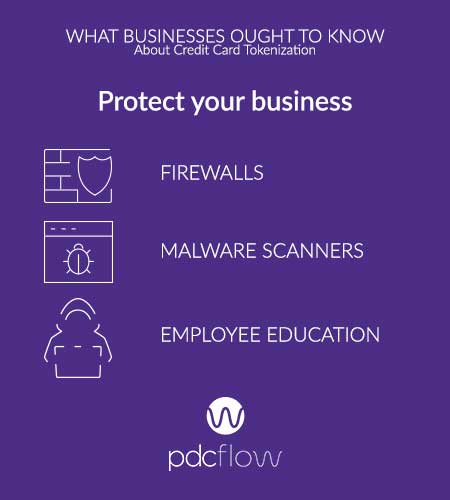
FIREWALLS
Many small to mid-sized businesses might believe they won’t be on a hacker’s radar, but the opposite is often more likely. While big-name companies get more press from a breach (making them appear more common) smaller businesses are a popular target because they’re less likely to have adequate protection.
Firewalls serve as the first line of defense for businesses trying to protect against a data breach. They work by stopping any unwanted parties from accessing your network.
MALWARE SCANNERS
Malware is any type of software that is designed to harm your computer. This can be viruses, spyware or ransomware among other harmful software. Routinely conducting scans can find vulnerabilities in your system so you can quickly correct them.
EMPLOYEE EDUCATION
Some data breaches are the product of active attempts to infiltrate a company’s network. However, one of the most common ways a breach occurs is through human error.
If employees don’t know how to protect sensitive data, firewalls and scans won’t always be enough to protect you. Conduct routine training for employees about the following:
- Social Engineering - Social engineering is a tactic in which scammers pose as someone else and ask for personal information. This allows them to defraud individuals or infiltrate your organization’s network by manipulating people into providing the necessary information.
Teach employees not to trust emails from coworkers, the IT department or others asking for passwords or other sensitive information – no matter who the message appears to be from.
- Suspicious Email Attachments - Along with directly tricking employees, systems can also be infected through attachments and links within emails. Teach employees not to click any links or unexpected attachments.
- Browsing Unsecure Websites - Outside of your inbox, there are still other ways your computer or company network can be infected. Teach your employees to be careful of the websites they browse on work computers or consider restricting employee access to avoid viruses infecting work computers.
- Internet Ads - Internet banner or pop-up ads can also contain viruses or malware that might put your company at risk. Teach employees not to click on any ads or offers. Just as with suspect or unsecure websites, this can often be avoided by restricting the type of access employees have through company computers.
Use a Trusted Data Tokenization Vendor
Internal protections set up and maintained by an IT team are necessary, but services like encryption and credit card tokenization are out of your control. That’s why you need to form vendor partnerships with security-minded companies that offer the services you need to run your business.
PDCflow’s payment processing software offers credit card encryption and tokenization services along with patented Secure Entry Overlay. This technology can keep your business out of PCI scope by ensuring sensitive credit card data never enters your network.
To learn more about keeping customer credit card data secure with PDCflow’s flexible payment, esignature, and document software, sign up for a demo today.

